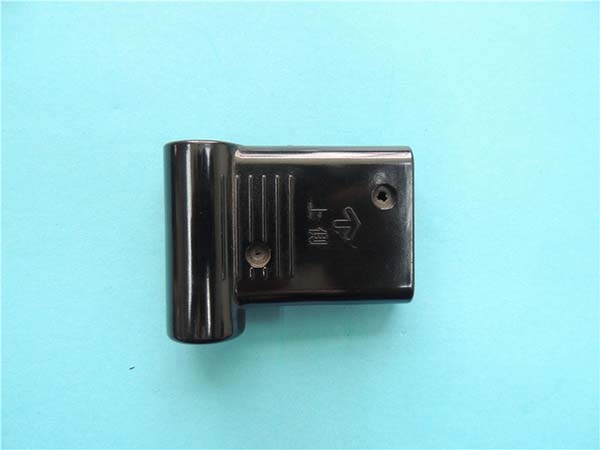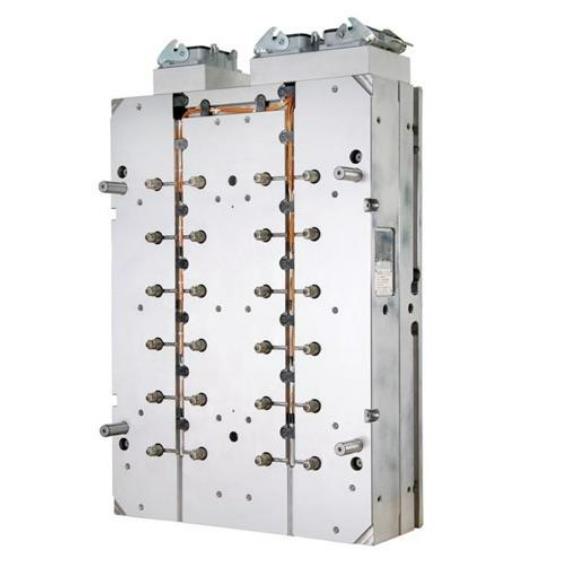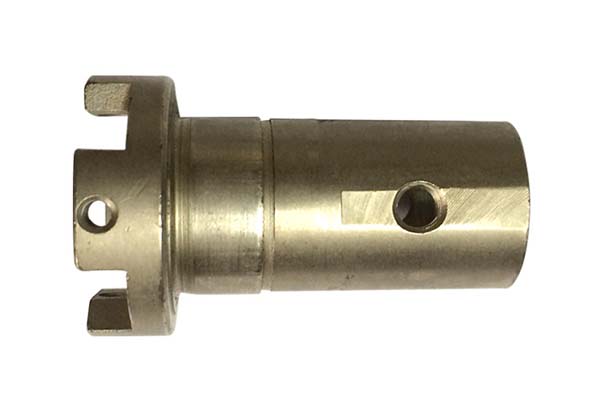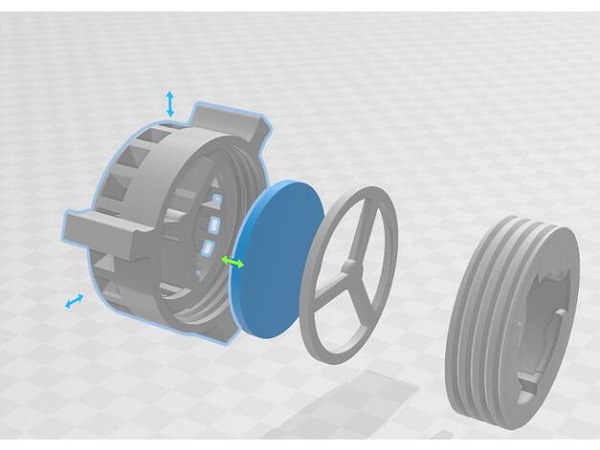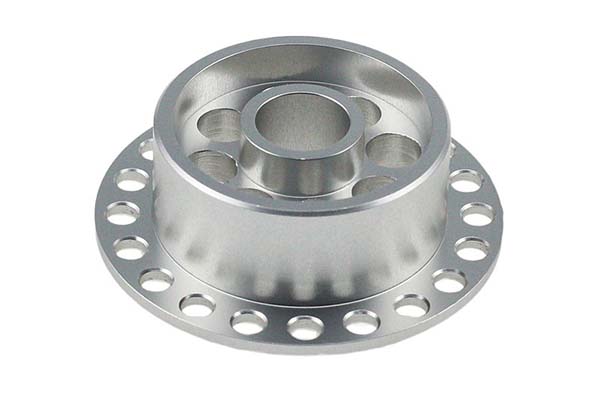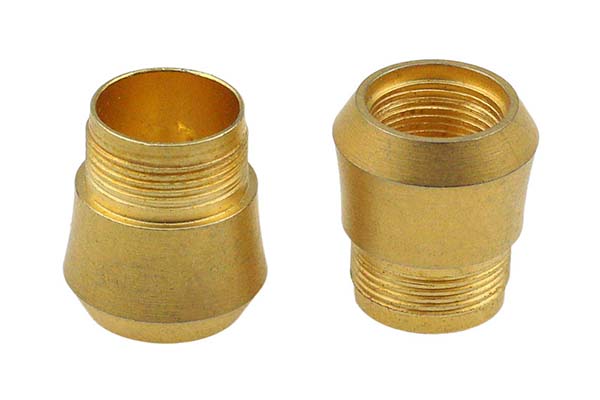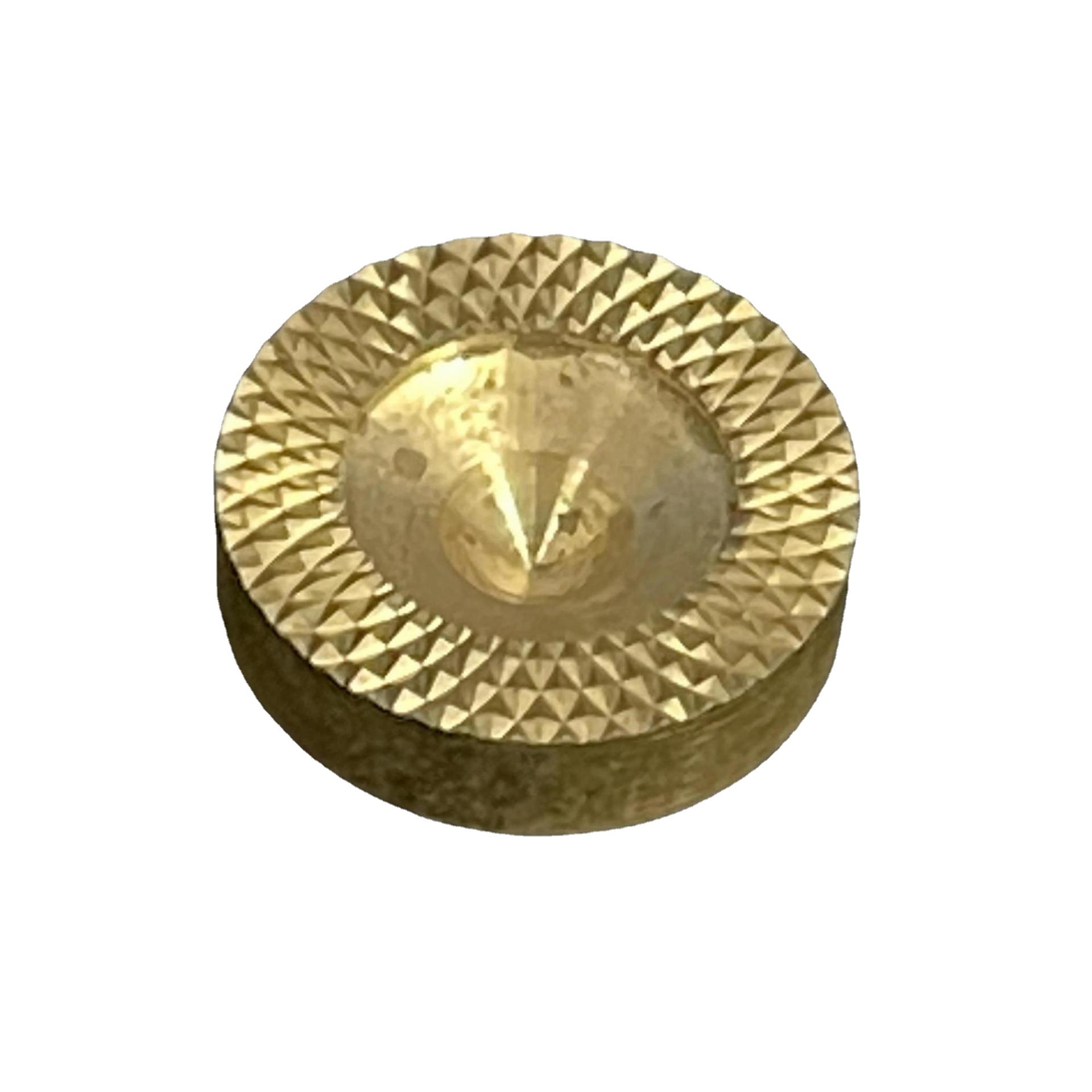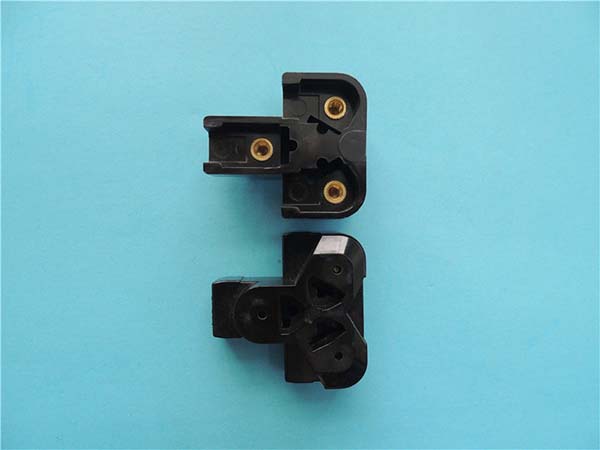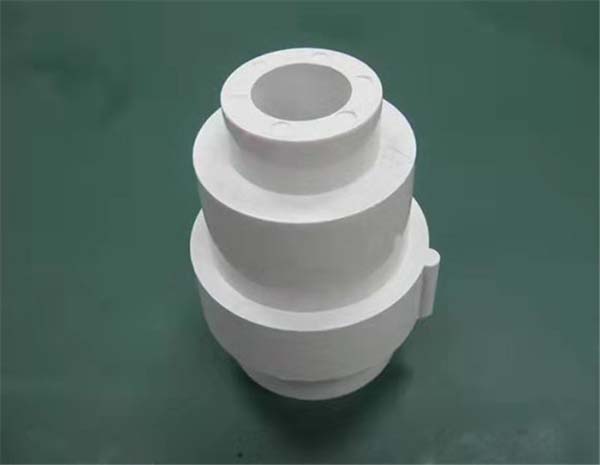CNC machining of PTFE (Teflon) comes with unique challenges that manufacturers often face. Its non-stick properties and low friction coefficient make it prone to slipping during machining, making secure machine setup difficult. Additionally, PTFE’s low mechanical strength and tendency to deform under cutting forces can compromise dimensional measurement and tolerance control. While its chemical inertness is a major advantage, it also means PTFE produces fine, fluffy chips that can clog machinery and affect surface finish. This guide addresses these pain points, offering expert strategies to master CNC machining of PTFE (Teflon).
CNC Machining Process
The CNC machining process for PTFE requires specialized techniques to handle its low friction and flexibility:
- CNC milling: The primary process for PTFE, using sharp tools and slow feed rate (0.1-0.2 mm/tooth) to prevent material deformation. A spindle speed of 3000-6000 RPM balances material removal and heat generation, while precision machining setups achieve tolerances of ±0.02-0.05 mm.
- CNC turning: Used for cylindrical PTFE parts like bushings or rods, with spindle speed of 1500-3000 RPM and light cutting forces to avoid "digging" into the material. A positive rake angle on tools helps reduce resistance.
- Machine setup: PTFE workpieces are secured with soft-jaw fixtures or vacuum chucks to prevent slipping—critical given its low friction. Double-sided tape or adhesive films can also be used for thin sheets to ensure stability.
- Cutting parameters optimization: PTFE’s low thermal conductivity requires moderate cutting speeds to avoid heat buildup, which can cause localized melting. For example, a carbide end mill might use a feed rate of 0.15 mm/tooth and spindle speed of 4000 RPM, versus 0.05 mm/tooth for harder plastics like PI.
- Toolpath optimization: Smooth, continuous toolpaths minimize abrupt changes in direction, reducing the risk of PTFE shifting during machining. Climb milling (cutting with the tool rotation) further reduces material deflection.
PTFE (Teflon) Material Properties
PTFE (Teflon) is a fluoropolymer with properties that make it indispensable in demanding applications, though they influence machining:
- Chemical inertness: PTFE is resistant to nearly all chemicals, including strong acids, alkalis, and solvents—ideal for chemical processing equipment and laboratory tools.
- Low friction coefficient: With a coefficient of friction of 0.04 (dry), PTFE is one of the slipperiest materials, reducing wear in moving parts but complicating machine setup.
- Thermal stability: It retains properties from -200°C to 260°C, making it suitable for extreme temperature environments in aerospace and industrial applications.
- Electrical insulation: PTFE has excellent dielectric properties, used in electrical insulators and high-frequency components.
- Non-stick properties: Its resistance to adhesion makes it ideal for food processing machinery but causes chips to accumulate on tools and fixtures.
- Mechanical strength: PTFE has low tensile strength (20-30 MPa) and is prone to creep resistance (slow deformation under load), requiring careful handling during machining.
| Property | PTFE (Teflon) | PEEK | PI Polyimide |
| Chemical Inertness | Excellent | Very Good | Excellent |
| Friction Coefficient | 0.04 | 0.3 | 0.35 |
| Continuous Use Temp | -200 to 260°C | -50 to 260°C | -200 to 300°C |
| Tensile Strength | 20-30 MPa | 90-100 MPa | 100-150 MPa |
Applications of CNC Machined PTFE Components
CNC machined PTFE parts are valued across industries for their unique combination of properties:
- Chemical processing equipment: Valves, gaskets, and pump components leverage PTFE’s chemical inertness and corrosion resistance, handling aggressive substances safely.
- Medical implants: Prosthetic joints and catheter components use PTFE’s biocompatibility and low friction, reducing tissue irritation.
- Semiconductor components: Wafer handling tools and chamber liners benefit from PTFE’s purity and resistance to plasma etching chemicals.
- Food processing machinery: Conveyor belts, gaskets, and molds use PTFE’s non-stick properties and FDA compliance, ensuring easy cleaning and food safety.
- Automotive parts: Gaskets, seals, and fuel system components use PTFE’s resistance to oils and fuels, withstanding high under-hood temperatures.
- Aerospace components: Electrical insulators and hydraulic system parts leverage PTFE’s thermal stability and low outgassing in vacuum environments.
- Laboratory equipment: Beaker liners, stirrers, and reaction vessel parts use PTFE’s chemical inertness to avoid contaminating experiments.
CNC Machine Tools for PTFE Machining
Specialized CNC machine tools are required to achieve precision in PTFE machining:
- CNC lathes: High-precision lathes with low-vibration spindles are ideal for turning PTFE cylindrical parts, ensuring concentricity despite its flexibility.
- CNC milling machines: 3-axis and 5-axis mills with sensitive feed controls handle complex PTFE parts, with 5-axis systems reducing workpiece handling to minimize deformation.
- Multi-axis machines: Enable simultaneous cutting from multiple angles, reducing setup time and improving accuracy for intricate PTFE components like medical implants.
- High-speed machining centers: Spindles with 6000-10,000 RPM allow faster material removal in PTFE, though speeds are kept moderate to avoid heat buildup.
- Precision grinding machines: Used for finishing PTFE parts to tight tolerances (±0.01 mm) and smooth surface roughness (Ra <0.8 μm), essential for sealing applications.
- Laser cutting machines: Ideal for thin PTFE sheets, producing clean edges without mechanical stress—preventing deformation in delicate parts.
Quality Control in CNC Machining of PTFE
Maintaining quality in CNC machined PTFE parts ensures performance in critical applications:
- Inspection methods: Dimensional measurement using CMM (Coordinate Measuring Machine) verifies tolerances, with measurements taken 24 hours after machining to account for PTFE’s creep (slow deformation under stress).
- Surface roughness: PTFE typically achieves Ra 1.6-3.2 μm with standard machining. Profilometers measure surface finish, with Ra <1.6 μm required for sealing surfaces in chemical processing equipment.
- Tolerance control: PTFE parts often require tolerances of ±0.02-0.05 mm, achievable with rigid setups and low cutting forces. Statistical process control (SPC) tracks variations to maintain consistency.
- Non-destructive testing: Visual inspection under magnification checks for surface defects like cracks or tears, while pressure testing ensures leak-tightness in seals and gaskets.
- Quality standards: Compliance with ISO 9001 and industry-specific standards (like FDA 21 CFR 177.1550 for food contact) ensures PTFE parts meet safety requirements.
- Part inspection: 100% inspection is recommended for critical PTFE components like medical implants, with sampling plans used for high-volume parts like gaskets.
Tooling and Cutting Tools for PTFE Machining
Choosing the right tools is critical to overcoming PTFE’s flexibility and low friction:
- Cutting tools: High-speed steel tools work well for PTFE, offering good performance at a lower cost than carbide. For high-volume runs, carbide tools (grade K10) provide longer tool life and better surface finish.
- PCD (Polycrystalline Diamond) tools: Ideal for achieving ultra-smooth surface finish (Ra <0.8 μm) in critical applications like semiconductor components, though they come at a higher cost.
- Tool geometry: Tools with a high rake angle (15-20°) reduce cutting forces, minimizing PTFE deformation. A 2-flute design improves chip evacuation, preventing clogging.
- Tool coatings: TiN (titanium nitride) coatings reduce friction between tool and PTFE, extending tool life by 20-30% compared to uncoated tools.
- Tool sharpening: Regular sharpening (every 500-1000 parts) maintains sharp cutting edges, which is critical for preventing PTFE from "pushing" instead of cutting.
CNC Programming for PTFE Machining
CNC programming for PTFE requires adjustments to accommodate its flexibility and low friction:
- CAD/CAM software: Advanced software with PTFE-specific toolpath templates optimizes cutting strategies, reducing cycle time and improving surface finish.
- G-code programming: Includes slow feed rates for initial cuts to secure the workpiece, with gradual increases as cutting progresses—preventing slippage.
- Simulation: Virtual machining simulations identify potential tool collisions and excessive cutting forces, preventing damage to PTFE parts.
- Toolpath generation: Circular interpolation around corners minimizes abrupt changes in direction, reducing the risk of PTFE shifting during machining.
- Nesting: Efficient nesting of PTFE parts in material blanks reduces waste, important given PTFE’s relatively high material cost.
- Machining strategies: Layered cutting (multiple shallow passes) instead of deep cuts minimizes material deformation, ensuring dimensional accuracy.
Yigu Technology's Perspective
Yigu Technology specializes in CNC machining PTFE (Teflon), leveraging expertise in handling its low friction and flexibility. We use vacuum chucks and soft-jaw fixtures for secure machine setup, preventing slippage during machining. Our quality control includes CMM (Coordinate Measuring Machine) inspection and 24-hour post-machining checks to account for creep, critical for medical and semiconductor clients. We optimize CNC programming with PTFE-specific toolpaths to minimize deformation and improve surface finish. Whether producing chemical processing components or food-grade parts, we tailor our processes to maximize PTFE’s strengths, delivering reliable parts that meet the strictest industry standards.
FAQ
- Why is PTFE (Teflon) difficult to machine, and how to overcome it?
PTFE’s low friction causes slipping during machining, while its flexibility leads to deformation. Overcoming this requires secure fixturing (vacuum chucks, soft jaws), slow feed rate (0.1-0.2 mm/tooth), and sharp tools with high rake angles to reduce cutting forces.
- What surface roughness can be achieved when machining PTFE?
With proper tooling and parameters, PTFE can achieve surface roughness of Ra 0.8-1.6 μm. This requires sharp carbide or PCD (Polycrystalline Diamond) tools, low spindle speed (3000-4000 RPM), and a light finishing pass (0.1-0.2 mm depth of cut).
- Which CNC machine tools are best for machining PTFE?
CNC milling machines and CNC lathes with sensitive feed controls are most effective for PTFE. Laser cutting machines work well for thin sheets, while multi-axis machines handle complex parts by reducing workpiece handling—minimizing deformation.
